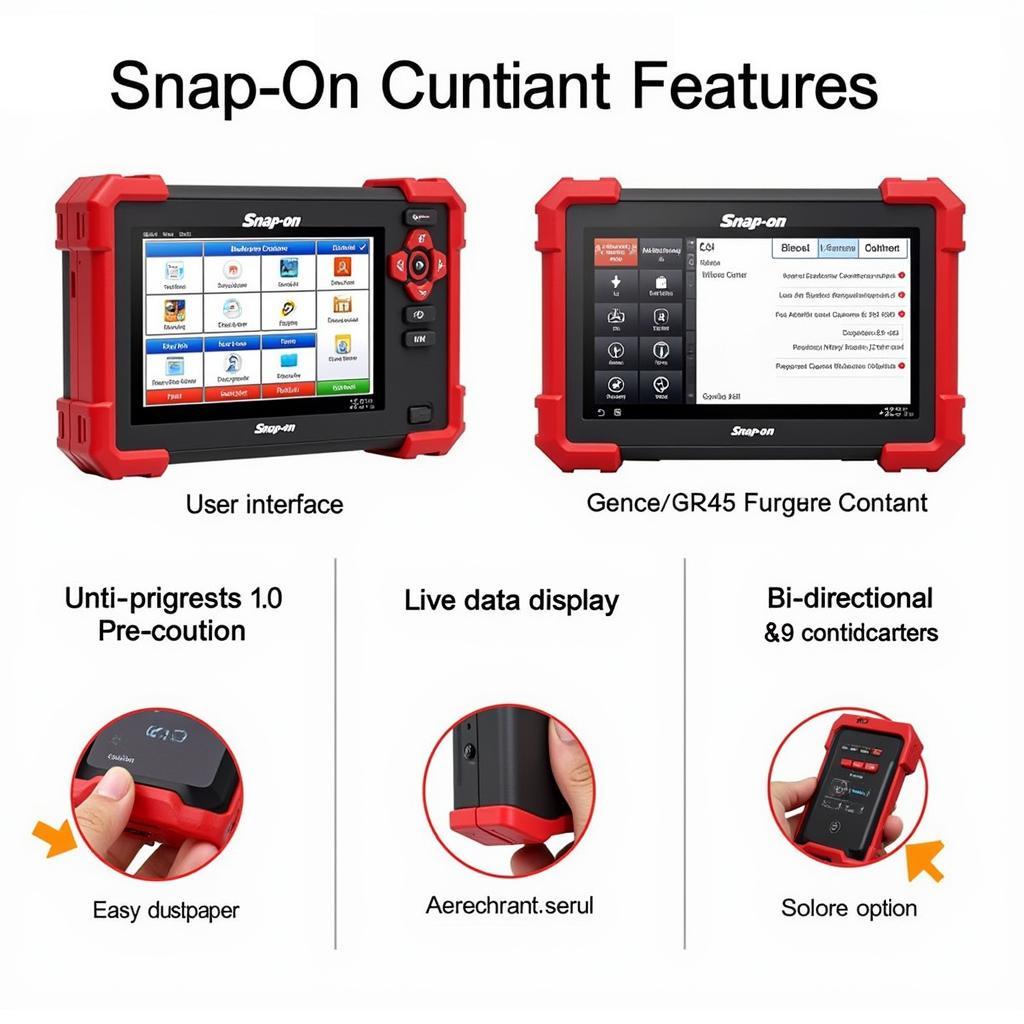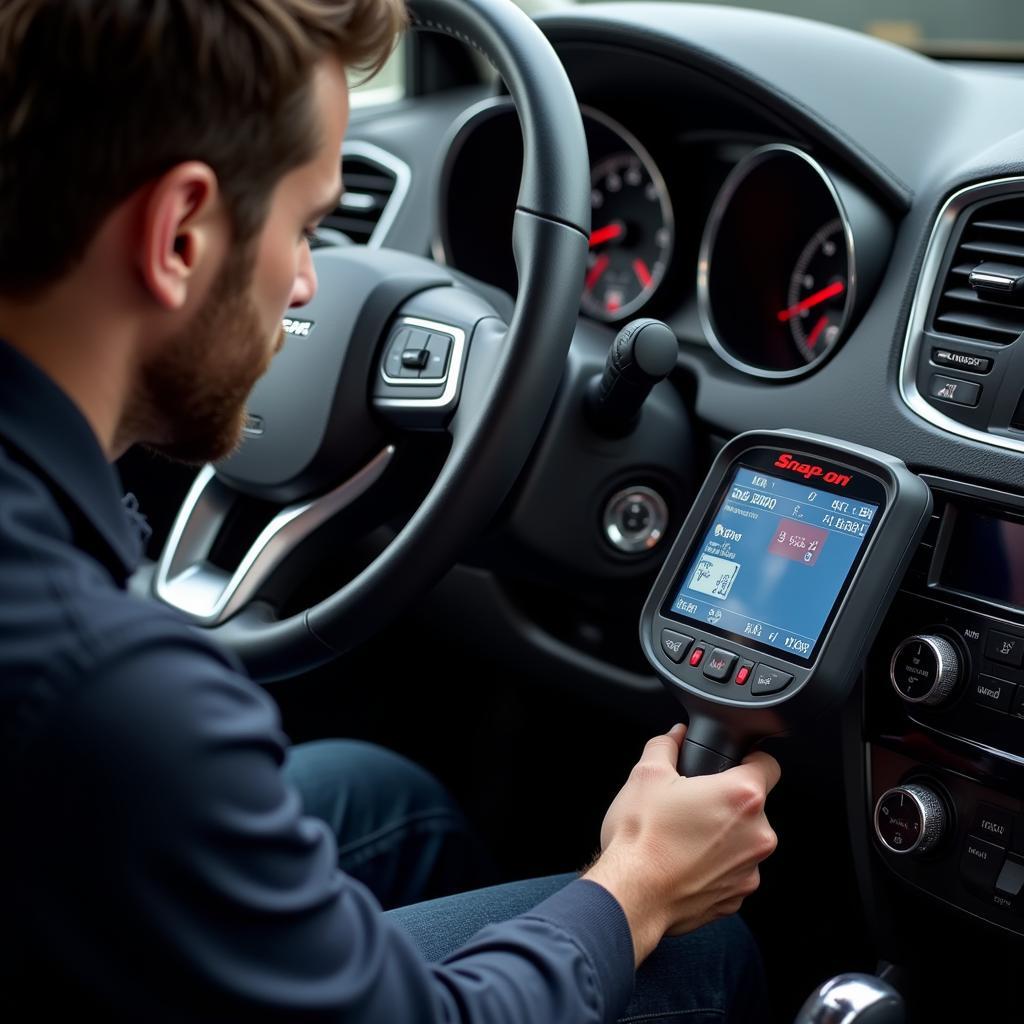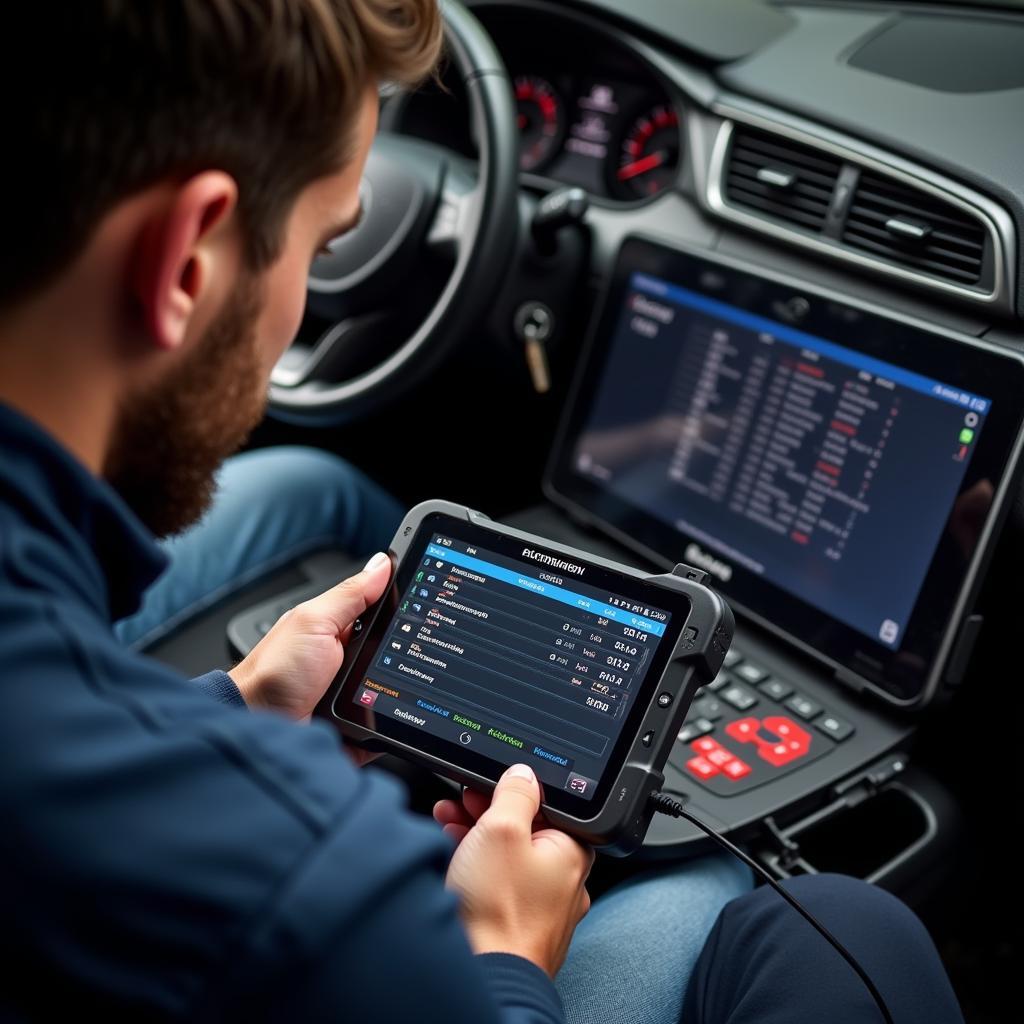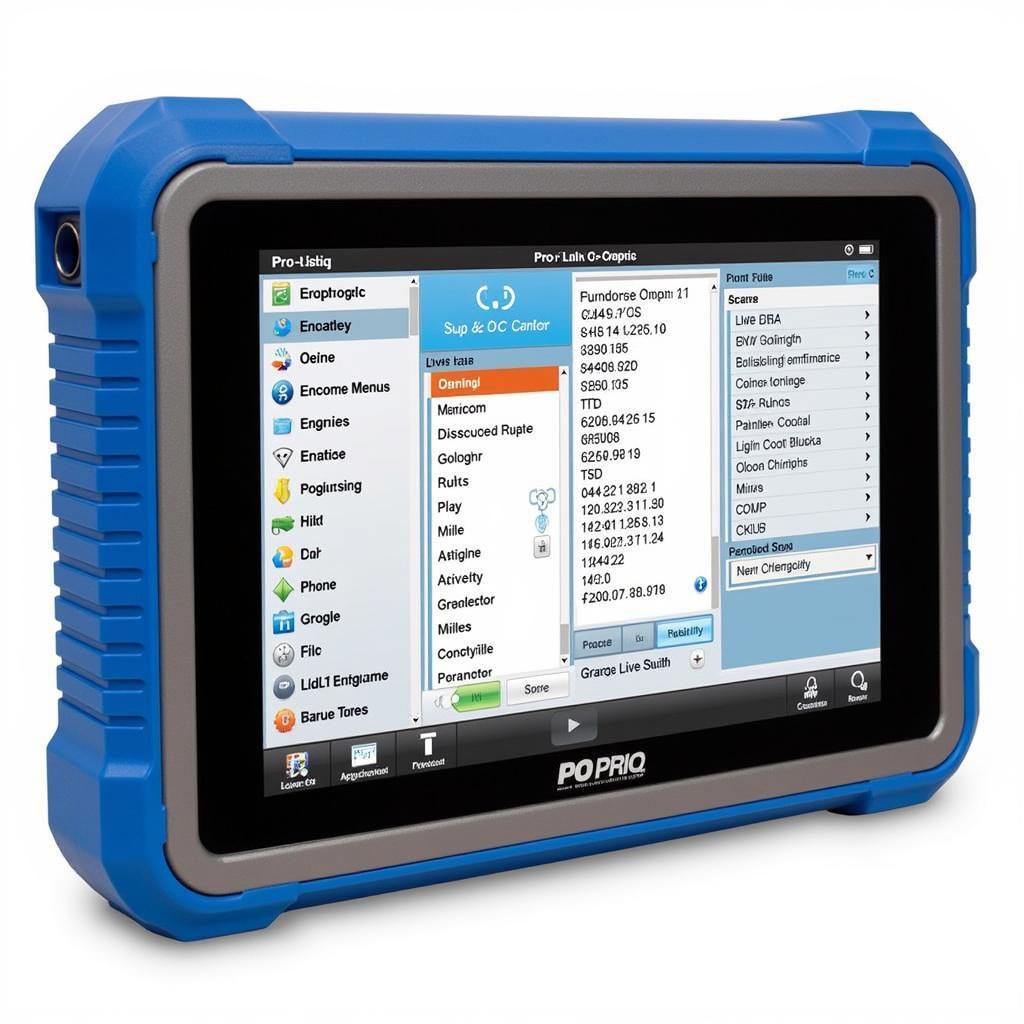A Snap-on Vehicle Scan Tool is an essential piece of equipment for any serious automotive technician or repair shop. These powerful diagnostic tools provide in-depth insights into a vehicle’s systems, allowing for accurate and efficient troubleshooting. This article will explore the benefits of using a Snap-on scan tool, explain its functionalities, and offer guidance on how to effectively utilize it for various automotive diagnostic procedures. For those seeking comprehensive information on scan tools, visit our scan tool resource.
Modern vehicles are complex networks of interconnected electronic control units (ECUs). A Snap-on scan tool acts as a bridge between these ECUs and the technician, translating complex data into readable information. This allows technicians to quickly pinpoint the root cause of a problem, saving valuable time and reducing diagnostic guesswork. Snap-on’s reputation for quality and innovation has made their scan tools a trusted choice for professionals worldwide.
Understanding the Power of a Snap-on Vehicle Scan Tool
What makes a Snap-on scan tool stand out? Snap-on offers a range of diagnostic platforms, from handheld devices to sophisticated software suites, catering to diverse needs and budgets. These tools are designed to interface with a wide array of vehicle makes and models, providing comprehensive coverage for domestic, Asian, and European vehicles. Key features include live data streaming, bi-directional control, and access to manufacturer-specific diagnostic procedures.
Key Features and Benefits of a Snap-on Scan Tool
- Live Data Streaming: Monitor real-time sensor data, providing dynamic insights into vehicle performance. This feature allows technicians to observe changes in sensor readings as they occur, aiding in the diagnosis of intermittent faults.
- Bi-directional Control: Actively test components such as actuators and solenoids. Bi-directional control empowers technicians to command specific components to operate, verifying their functionality and isolating faulty parts.
- Manufacturer-Specific Diagnostics: Access in-depth diagnostic procedures unique to each vehicle make. This allows technicians to perform specialized tests and access detailed information often unavailable with generic scan tools.
- Code Reading and Clearing: Retrieve and clear diagnostic trouble codes (DTCs), providing a starting point for troubleshooting. This fundamental function helps technicians identify the specific systems or components that are experiencing issues.
- Software Updates: Stay current with the latest vehicle technologies through regular software updates. This ensures that the scan tool can effectively communicate with newer vehicle models and access the most up-to-date diagnostic information.
 Snap-on Scan Tool Features
Snap-on Scan Tool Features
Utilizing a Snap-on Scan Tool for Effective Diagnostics
How can you maximize the effectiveness of your Snap-on scan tool? Start by familiarizing yourself with the tool’s interface and navigation. Snap-on provides extensive training resources to help users master the functionalities of their diagnostic platforms. Regularly updating the software is crucial for maintaining compatibility with the latest vehicle technologies.
Practical Tips for Using a Snap-on Vehicle Scan Tool
- Connect the tool correctly: Ensure proper connection to the vehicle’s diagnostic port.
- Identify the vehicle: Accurately input the vehicle’s year, make, and model.
- Retrieve DTCs: Scan for stored and pending diagnostic trouble codes.
- Analyze live data: Monitor relevant sensor data to pinpoint the issue.
- Perform bi-directional tests: Test components to confirm their functionality.
- Consult repair information: Utilize repair databases and service manuals for guidance.
- Clear codes: After repairs, clear the DTCs and verify the fix.
- Document findings: Record all diagnostic data and repair procedures.
You might be interested in exploring the different types of scan tools available on the market. Check out our versus scan tool page for a comparison.
 Snap-on Scan Tool Diagnostics in Action
Snap-on Scan Tool Diagnostics in Action
“A Snap-on scan tool is an investment in efficiency and accuracy,” says John Miller, a seasoned automotive technician with over 20 years of experience. “It’s not just about reading codes; it’s about understanding the data and applying it to solve complex problems.”
Choosing the Right Snap-on Scan Tool
What Snap-on scan tool is best for you? Consider your specific needs and budget. Snap-on offers a wide range of diagnostic platforms, from entry-level models to advanced systems with specialized functionalities. Consult with a Snap-on representative to determine the best fit for your diagnostic requirements. For insights into what tools professional technicians use, visit what scan tool do techs use.
“Investing in a quality scan tool like a Snap-on is essential for staying competitive in today’s automotive industry,” adds Sarah Johnson, a workshop owner and automotive expert. “It allows us to diagnose and repair vehicles efficiently, ultimately improving customer satisfaction.” If you’re in the market for a heavy-duty truck scan tool, visit our heavy truck scan tool page.
 Snap-on Scan Tool Training
Snap-on Scan Tool Training
In conclusion, a Snap-on vehicle scan tool is a vital tool for modern automotive diagnostics. Its powerful functionalities enable technicians to quickly and accurately pinpoint the root cause of vehicle problems, leading to efficient repairs and improved customer satisfaction. By mastering the use of a Snap-on scan tool, automotive professionals can enhance their diagnostic capabilities and stay ahead in the ever-evolving automotive landscape. Connect with us at ScanToolUS for support. Our number is +1 (641) 206-8880 and our office is located at 1615 S Laramie Ave, Cicero, IL 60804, USA. You can also explore more about Snap-on Tech 2 scan tools available at O’Reilly’s by visiting tech 2 scan tool oreillys.


